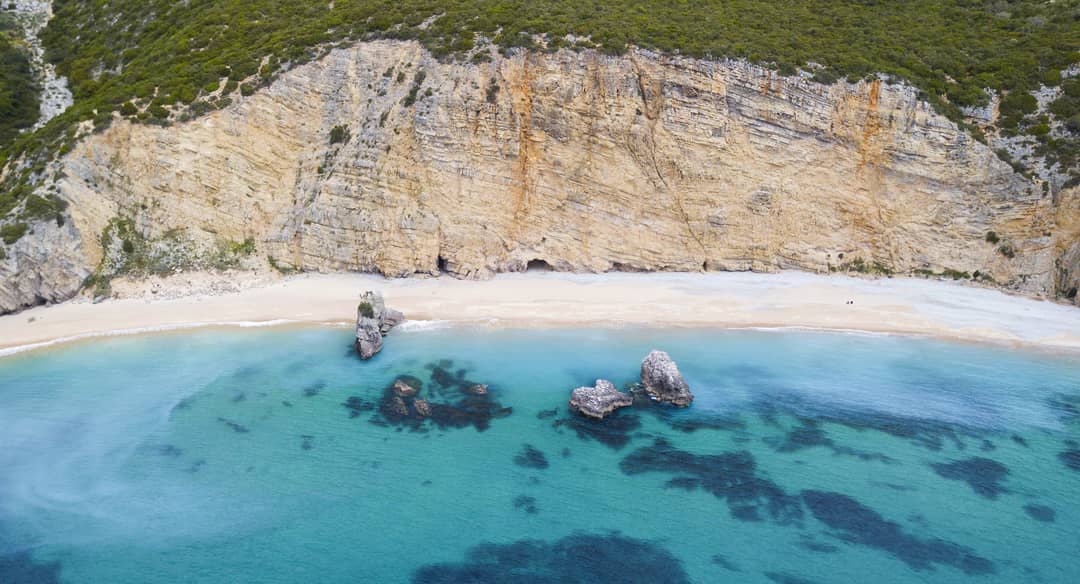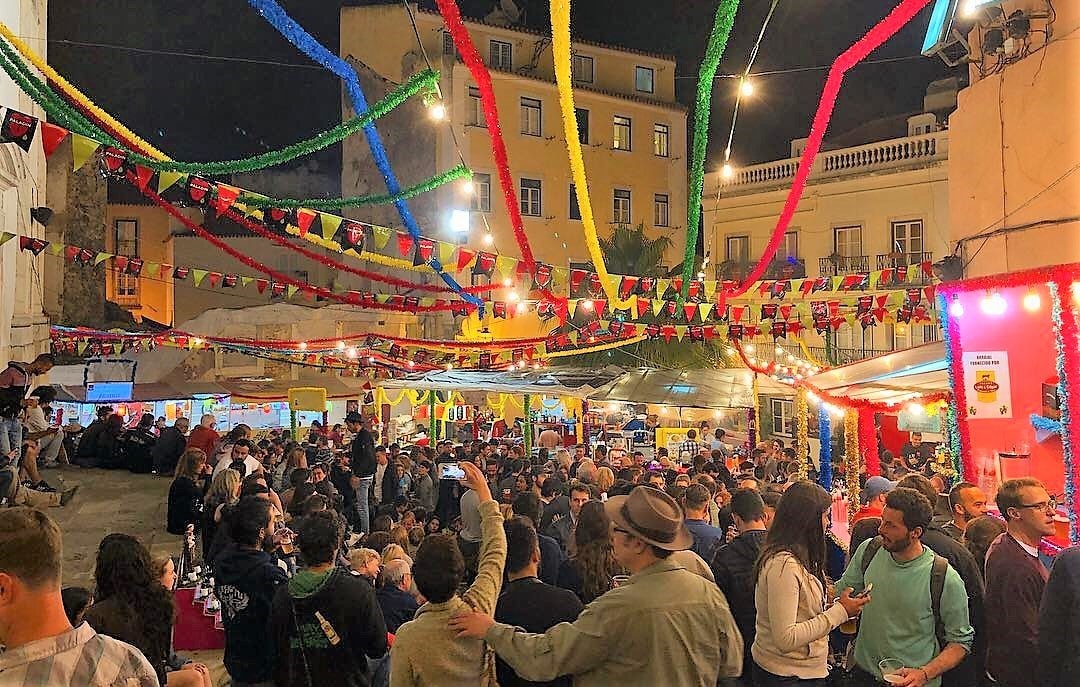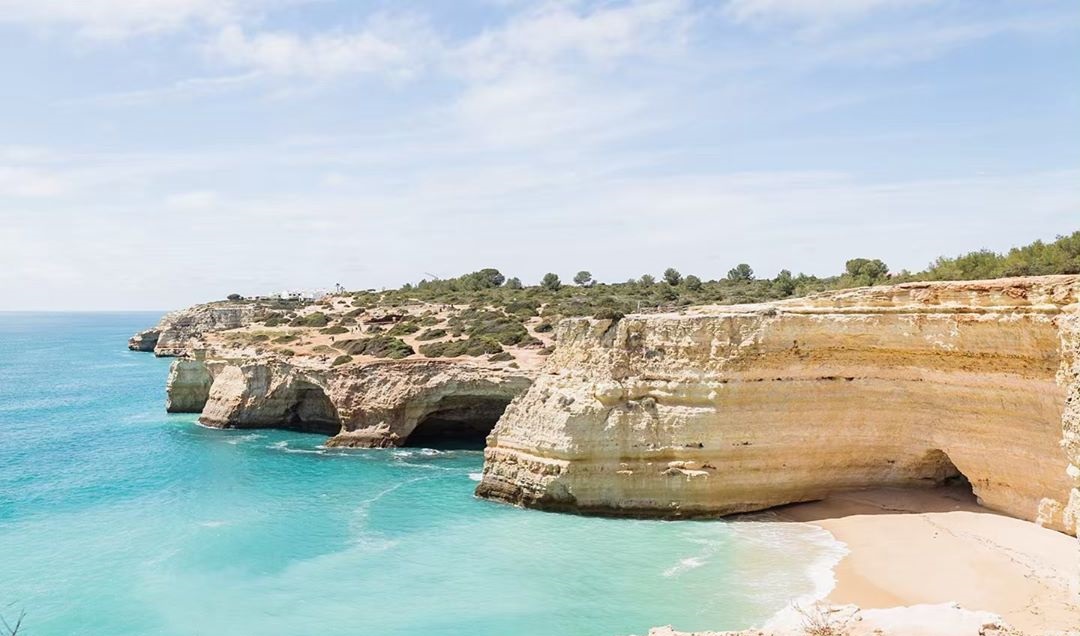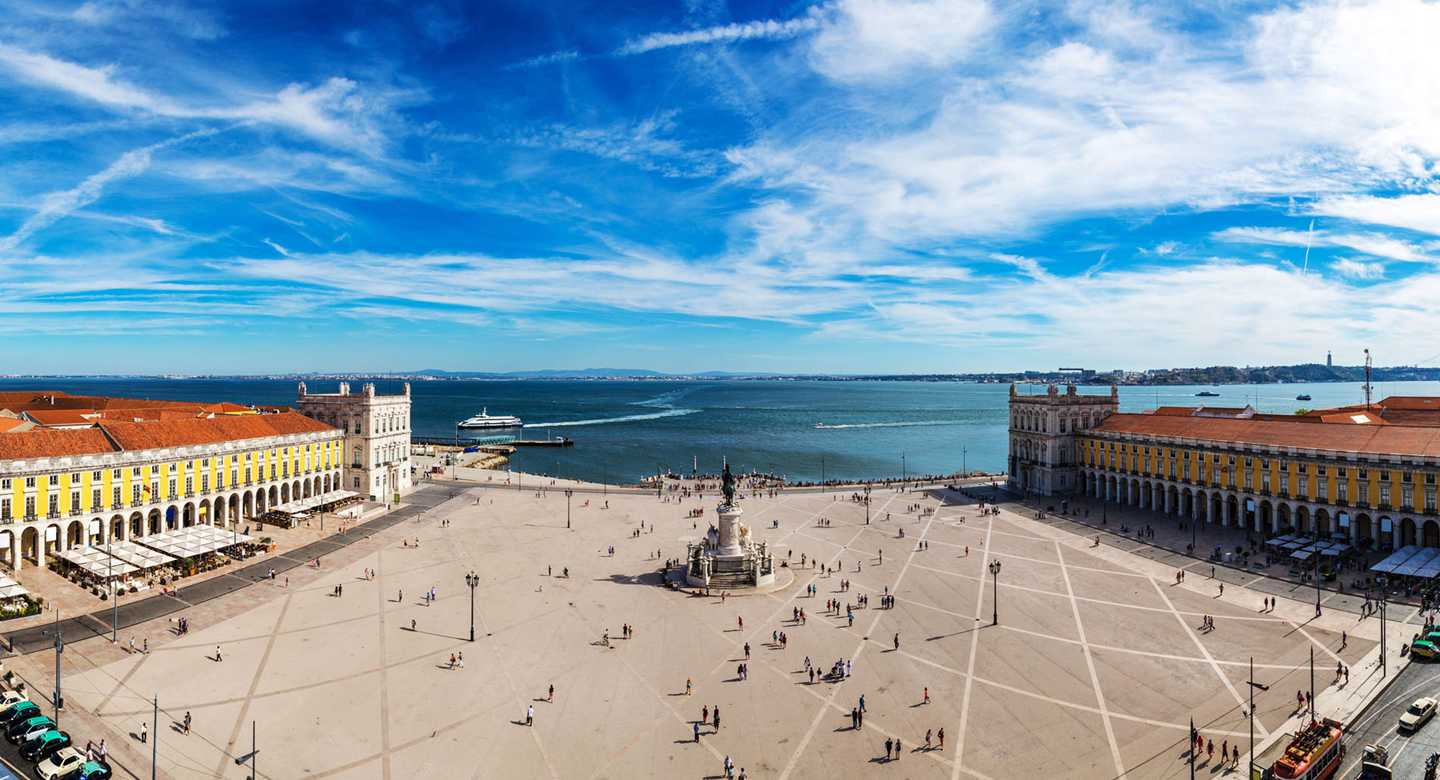14 places you cant miss in Lisbon Portugal
Lisbon is probably best known for its colonialist history, ornate architecture and Fado music tradition. But some of its best features are in everyday life - spectacular hill views in Alfama or São Jorge Castle , pleasant weather all year round and friendly places. To enjoy them, bring some comfortable shoes and a pocket map of the public transport system, or just take tram 28 to see it all. Plan to spend half a day to a full day exploring Beléms seafront neighborhood , or perhaps plan an excursion to Sintra , 20 miles northwest of Lisbon.
Top Things to Do in Lisbon
Tram 28
Some visitors recommend taking the tram up the steep Alfama hill and then walking back to explore the neighborhood. Due to the trams popularity, trolley cars tend to get crowded quickly, so make sure you arrive early or late in the day to avoid long lines. Also, because of the trams popularity with tourists, it is a target for pickpockets. Remember to keep an eye on your belongings, especially cameras.
The tram costs 2.90 euros and tickets can be purchased on board and at city kiosks. If you purchased a 24-hour transit ticket, your tram fare will be included. Tram 28 hours depend on the route, day of the week and time of year. Generally, visitors can expect service to start after 7:30 and end at 21:15. For more information, visit the Lisbon transport website .
Alfama
Some tourists choose to take tram 28 through the Alfama neighborhood because it is very bumpy, but whether you choose to burn a few calories or face the crowds of trams, a visit to picturesque Alfama is a must. With a history that goes back to the Moors, Alfama is characterized by narrow cobbled streets that run through dozens of quaint shops, cozy little restaurants and traditional fado clubs, all housed in historic but well-preserved architecture. Popular city attractions such as São Jorge Castle , Sé Cathedral and Flea Market are also located in Alfama.
Travelers come in droves to witness the neighborhoods famous charm (and some street art), and say this is the best place to visit Lisbon. Visitors also say this is not an attraction to the breeze, but enjoy the weather and get lost. Leave the map and wander the colorful streets, have an outdoor drink in an alley, or browse one of the neighborhood bars. many views, including the popular Santa Luzia Viewpoint, or the Mello Breyner Andresen Sophia Viewpoint.
Belem
The edge of Bethlehem is a historic district that is home to some of the most important monuments of Lisbon, museums and a popular place of Portuguese tarts, the Pastel de Belém. Here you find the Monastery of Jeronimos , the Belém Tower, the Monument to the Discoveries, the Belém Palace (the official residence of the President of Portugal), the Berardo Collection Museum and various landscaped gardens. As the Monument to the Discoveries wonderfully illustrates, Bethlehem is important because it was a popular starting point during the Age of Discovery. Some notable adventurers who boarded Belem include Vasco da Gama, who was the first person to sail directly from Europe to India, and Fernando Magalhães, who was on board the first ship that successfully circumnavigated the world. In addition, Christopher Columbus also made a stop here on the way back to Spain from the Americas.
Belém is about 10 km west of central Lisbon and is accessible via a metro station of the same name. You can also reach the area by tram. 15 or 127 make stops here.
Santa Justa Elevator (Santa Justa Elevator)
Although visitors were more than happy with the views, some visitors found the attraction an illusion, especially since there are so many free viewpoints throughout the city thanks to the citys many hills. Travelers also complained about long queues during the day and suggested going too early in the day or too late at night, but even that is not a guarantee. Also, as the lift capacity is limited, the lines move slowly.
A great way to skip the lines is to enter the Bairro Alto tower and pay 1.50 euros to access the observation deck. To take the elevator up to the observation deck and back down, it will cost 5 euros. You can find the Santa Justa Lift in the Baixa district, located between Baixa-Chiado and Rossio subway stations. The lift is open every day from 07:30 to 23:00 and until 21:00 in winter.
National Tile Museum
One of the most notable aspects of Lisbons seductive architecture is its vibrant ceramic tiles. You can find these Portuguese tiles, or tiles , adorned in buildings during a walk over the city (especially in Alfama ), in gift shops (or at Feira da Ladra ), or within the walls of other major city attractions.
If you dont feel like spending time searching the street tiles, a visit to the National Tile Museum is the perfect alternative. The museum is filled to the brim with tiles of all colors and sizes, some of which date from the 15th century. Some are simple, with individual tiles decorated with flowers or sailboats, while others are assembled to create large murals telling people or stories full of history. Not only that, but there is information scattered throughout the detailing of how the tiles are made.
Recent visitors have enjoyed both the museums extensive collection and its building - a former convent. As such, some visitors said the highlight of the visit was the chapel, adorned with not only many tiles, but secular oil paintings.
The museum, which also houses a gift shop and café, is open from Tuesday to Sunday from 10am to 6pm; Tickets cost 5 euros for adults. An audio guide is included with the admission. The National Tile Museum is located about one and a half miles northeast of Alfama. You can reach the museum from Santa Apolónia subway station and walk a little less than a mile northeast. Several buses, including routes 718, 742 and 794, stop in front of the museum. For more information, visit the museum website .
St. Georges Castle
São Jorge Castle , or São Jorge Castle , is situated on the top of Lisbons highest hill in Alfama , offering great history and views of the city. The castle served as a fortification for the Romans, Visigoths and Moors, who turned it into a royal palace before it was finally taken over by the first king of Portugal, Afonso Henriques. The attraction has kept most of the buildings relics intact, including canons, which are scattered throughout, underground chambers and 18 towers, one of which houses a darkroom. There is also an on-site restaurant, gardens where wildlife often makes sightings and an archaeological museum.
Visitors gushed through the incredible city and sea views. But while most were impressed by the quality preservation, many found the attraction lacking as there is not much to do there. They also advised future visitors to wear comfortable shoes as they will have to climb a hill to reach the castle.
São Jorge Castle is open from 9am to 6pm from November to February; From March to October, it receives visitors from 9am to 9pm. The ticket costs 8.50 euros for adults and is free for children under 10 years old. Family passes, which cover admission for two adults and two children under 18, cost 20 euros. You can reach the attraction of tram 28 or on foot from the two nearest metro stations, Martim Moniz and Rossio. For more information, visit São Jorge Castle from the website .
Belem Tower and Monument to the Discoveries
What appears to be an idyllic mini-castle floating on the Tagus river was originally a fort that served to protect the port of Lisbon in the 16th century. It served as a starting point for explorers who want to travel the world during the Age of Discovery. Today, the Manueline structure serves as a monument to this heyday and was named a UNESCO World Heritage Site, along with neighboring Jeronimos Monastery . Visitors can come and explore the interiors, whose rooms have once served as royal quarters, a prison and a chapel, to name a few.
The Monument to the Discoveries, or the Monument to the Discoveries, is within walking distance and equally stunning. The waterfront structure was built in the 1960s in conjunction with the 500th anniversary of the death of Henry the Navigator. Although he was not an explorer, he significantly supported a handful of important explorations during his time. The candle-shaped statue is lined with notable Portuguese figures throughout history, including other navigators, artists and King Manuel. Inside, visitors can watch a multimedia presentation of Portugals history, as well as climb to the top of the monument for a greater view of the river.
Travelers were taken by both attractions, but many lamented the crowds near and around other points of interest in historic Belem . Unless they are really curious to see what is inside the monuments, most visitors recommend enjoying the exteriors, rather than waiting in long lines to explore the dull interiors.
The Belem Tower is free to visit, but to visit the interior of the attraction you will need to pay 6 euros per person. The Monument to the Discoveries is also free to check out, but costs 4 euros for the tour. The hours for Belém Tower vary by season, but are generally open Tuesday through Sunday, from 10am to 5:30 pm or 6:30 pm. The Monument to the Discoveries is open from Tuesday to Sunday from 10am to 6pm. via tram 15 to Belém. If you bought a Lisboa Card, admission to the Belém Tower is free. For more information about the tower, visit the official government website .
Gulbenkian Museum (Calouste Gulbenkian Museum)
Less than 50 years old, the Calouste Gulbenkian Museum exhibits a world-renowned art collection. The late Calouste Gulbenkian, a former oil magnate and illustrious art collector, has amassed 6,000 works of art over his lifetime, donating everything to Portugal after his death. The diverse selection on display includes art of all kinds from around the world, including Egyptian statues, European paintings by Rubens and Rembrandt masters, and Chinese porcelain, to name a few.
Recent travelers enjoyed reading the museum, with many saying that the long trip away from the city center was worth it. Visitors not only appreciated the museums diversity of art, but some were delightfully puzzled that it all came from one person. Others were pleased with the size of the museum, saying it was large enough to fill a few hours of the day but still manageable. The architecture and gardens received equally favorable ratings.
You will find several restaurants as well as a museum shop on site. Ticket prices depend on which exhibits you wish to view, but expect to pay 11.50 euros to access all collections of the property. Children under 12 can visit for free. Entry on Sundays is waived after 14:00 hours. If you bought a Lisboa Card, you will save 20% on the museum entrance. If you would like to take a guided tour (recommended by previous travelers), expect to pay 12 euros. Tours are available in English and are offered on Sundays and Mondays at 11am. No advance reservations required. The museum is open from 10am to 6pm daily, but the museum is closed on Tuesdays. ANDYou will find the museum outside the São Sebastião subway stops or Spain Square. Several bus lines, including routes 716, 726 and 756, serve the area. website .
Jeronimos Monastery
The Jeronimos Monastery, also known as the St. Jerome Monastery or the Jeronimos Monastery, is a UNESCO World Heritage Site located in the Belém district of Lisbon. Exemplifying the Manueline style of Portugal - a highly ornate architectural style named after the king of the time (Manuel I) - the monastery was built during the Age of Discovery to honor explorer Vasco da Gama, while he and his crew passed the last night in Portugal on the spot before embarking on his famous trip to India in 1498. During the 17th century, the structure served as a monastery for the monks, whose job was to comfort the sailors and pray for the king. Eventually, it became a school and orphanage until 1940.
Today, visitors can explore the terrain at their own pace while admiring the details of the pillars, cloisters and vaulted ceilings. Tourists can also stop at St. Jeromes Chapel and the tombs, which contain notable Portuguese in history, including a handful of royals and Vasco da Gama himself. Travelers found the attractions unique architecture impressive and recommended a visit just for that reason. However, some travelers have complained about long lines, so plan to arrive early to beat the crowd.
Admission costs 10 euros for adults; Children up to 12 years old get in free. If you have purchased a Lisboa Card, your admission fee is covered. The monastery is open from 10 am to 5:30 pm from October to May and extended until 6:30 pm, closing time from May to September. It is important to note that the attraction is closed on Mondays, in addition to selected holidays. You can reach São Jerônimo Monastery by taking tram no. 15 from Praça do Comércio, in central Lisbon. Several bus lines, including 727, 28 and 729, stop here as well. For more information, visit the St. Jerome Monastery website .
Oceanarium (Lisbon Oceanarium)
The Lisbon Oceanarium is not just an aquarium, but considering its size, a world in itself. The Oceanarium, as is also often mentioned, is the largest inland aquarium in Portugal, containing over one million gallons of seawater, sustaining the lives of 8,000 sea creatures. Four permanent exhibitions represent different habitats that house species of birds, fish, amphibians and mammals. Here, visitors will find starfish and corals like penguins, puffins and sea otters and everything in between. Along with a peek at life under the sea, the Oceanarium also offers a variety of activities, from guided tours to a shark sleepover and even a Fado show.Visitors were impressed by how impressive the aquarium was and suggested stopping in if they needed a break from the citys many historic sites. Several reviewers, in particular, loved the large central tank, and said the attraction could easily be enjoyed by all ages, not just children. Travelers advised to book at least half a day to see the attraction and warned of large crowds.
You can find the Oceanarium in Parque das Nações, the most contemporary part of the city, just outside the Oriente subway stop. Admission is 16.20 euros for adults and 10.80 euros for children from 4 to 12 years. If you bought a Lisboa card, you will receive a discount on admission. There is a restaurant and two gift shops on site. The aquarium is open from 10am to 8pm daily; During winter, it is open from 10:00 to 19:00 For more information, visit the Oceanarium website .
Flea Market
If youre looking for a unique souvenir to take home, you might want to try your luck at the Flea Market flea market. Located in the Alfama district and spread across Campo de Santa Clara, the contents of Feira da Ladra can be trash or treasure, depending on what type of traveler you ask for, or what kind of week it is. Either way, you are likely to find some souvenirs, antiques, azulejos (Portuguese tiles), art and various second hand / vintage products.
But Flea Market is not your common flea market. The market is rumored to have been around since the 12th century, with some of the suppliers known for selling stolen goods, hence the name ladera , which translates to thief. Fact or fiction, youve probably never been to a sea-view flea market. The market is open from 6am to 5pm on Tuesdays and Saturdays and can be accessed at Tram 28 . The market is free to visit. After reading the products, you will find the National Pantheon and the Museum of Decorative Arts within walking distance.
Outros Artigos Populares no Blogue
-


Porto Tourism visits Bairro Barredo
Behind the busy Cais da Ribeira is the true heart of the city of Porto, a maze of narrow, dark and neglected alleys, with paths that accompany a const... -


Is considered the most beautiful wild beach of Portugal a paradise of crystal clear waters
This wild beach is located in a small cove at the foot of the Arrábida mountain range. Access is by rail. Parking is limited and visitors... -


Portugals Secret Beach Ribeira do Cavalo Beach and 30 Minutes from Lisbon
Ribeira do Cavalo Beach is a wild beach located very close to the village of Sesimbra in the west. Unsupervised beach with no support conditions ... -


These are the 10 best beaches in the Algarve in 2019
Tres Irmaos Beach, Algarve Seen from above, Três Irmãos Beach is shown as a small corner of green... -


Tips on Holiday Shopping in Portugal
Regardless of where it is made - from the Azores to the remote northern province of Trás-os-Montes - goods from all over the country end up in ... -


The Festas de Lisboa will have hundreds of free programs. Know them here
Lisbon parties! The most lively June show in the city is about to begin and promises hundreds of free, open-air suggestions every June. &n... -


This is Europes best beach destination its a true paradise Portugal
That distinction for Portugal was first awarded to the country in 2017, renewed in 2018 and again awarded in 2019 »which consolidates Portugals ... -


This square is the 12th largest in Europe Portugal in 5th
The Praça do Comércio , formerly the Palace Square , is a square in downtown Lisbon &nbs...
